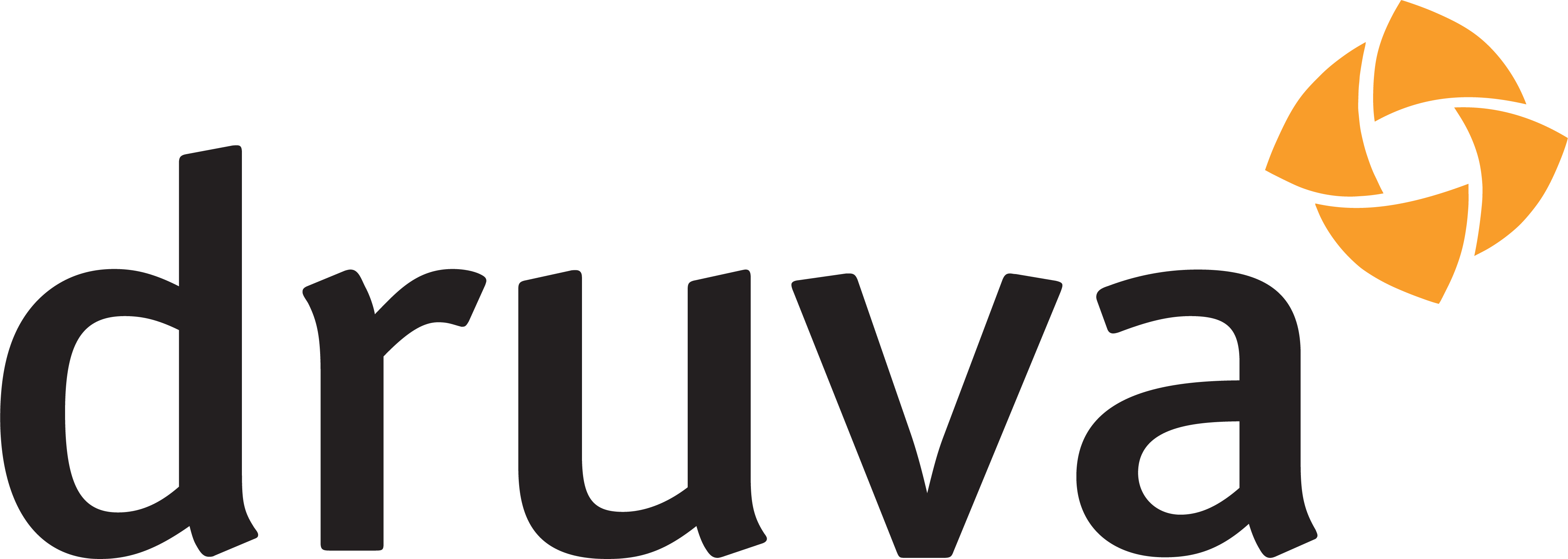Targeted Marketing Lists: Easy Ways to Build Lists That Convert
Targeted marketing list resources:
Successful email marketing isn't done in a day, but you can speed up the process by using targeted marketing lists.
Think of your marketing approach like building a house. You wouldn’t dump a load of bricks, cement, and timber in a large pile and call it a home. You’d build with care and precision, following a clear design to ensure the final structure is functional, attractive, and sturdy.
After all, the last thing you want is for your B2B marketing efforts to be a house of cards.
In this blog, we’ll get into some of the nuts and bolts of creating email marketing lists that will increase conversions and improve your numbers. Whether you’re targeting niche markets or casting a wider net across the European Union, this approach to email marketing creates a solid foundation on which to build.
Read on👇
What is a marketing list?
Targeted email marketing delivers personalized campaigns to an email list of subscribers based on demographics, interests, or behaviours. By segmenting the email list and tailoring messages, businesses can improve engagement and conversions, leading to a better return on investment.
A targeted mailing list gives you guidelines for your campaigns. It’s a curated roster of potential leads or clients carefully selected based on specific criteria that make them relevant to your business.
The keyword here is ‘targeted,’ so the prospects you plan to engage with should match your Ideal Customer Profile (ICP). If they don’t, you’re wasting your time and resources on leads with a significantly lower chance of converting.
By narrowing down your prospects and focusing your efforts on the inboxes of decision-makers most likely to find your services valuable, you’ll boost relevance, foster engagement, and drive more sales.
Advantages of creating a targeted email list for marketing
Now that we’ve defined what a marketing email list is, let’s look at some of the positives you can expect from implementing it 👇
Higher engagement rates
It’s a cold, hard truth that with the sheer volume of mails hitting everyone’s inboxes nowadays, getting prospects to click open is much more difficult.
You must be more innovative with your targeted email campaigns.
There’s no point in sending your cleverly crafted message about the benefits of modern roofing materials to someone at a baking supplies company.
Trust me, it’ll flop no matter how much dough you put into it.
By using B2B email marketing lists, you’ll already be contacting leads predisposed to what you’re selling, which means higher open and click-through rates.
For instance, say you were a manufacturer of eco-friendly packaging materials. You’d get better engagement by targeting EU-based brands with sustainability as one of their core values rather than those that don’t.
Better ROI
Every mail you send has an associated cost, whether it’s B2B marketing software subscriptions or your team’s time.
Targeted lists for email marketing mean fewer wasted resources on dead leads. You’re putting your efforts where they matter most, and that pays off big time in the long run.
You’ll get a much higher ROI by targeting 5,000 well-researched, relevant contacts with a tailored message than by sending a generic email campaign to 50,000 random contacts. It’s about quality, not quantity.
Cognism is well-known for the value and quality of its marketing database. It ensures accurate, refreshed data to keep your CRM free from unactionable data points that slow down your outreach plans.
After all, your email marketing list is no good if it is outdated and incorrect.
Here’s what a customer had to say 👇

SDR Manager EMEA @Druva

Improved customer relationships
When you consistently deliver value and personalised content that resonates with your target audience, you build trust and position yourself as a thought leader in your prospect’s eyes.
Segmented data lists for marketing help ensure personalisation, which creates stronger, more profitable relationships.
Even when you automate your targeted email marketing, you’re strengthening customer relationships and positioning your brand as one that understands its audience.
And relevancy builds trust. Trust builds loyalty.
Easy ways to create targeted lists for email marketing
Building a targeted marketing list may seem daunting, but it’s easier than you think! With these tips, you’ll be on your way to success in no time 👇
1. Define your ideal customer
Having a strong base is essential when building anything, whether it’s a small structure or a large one. The same applies to creating a targeted mailing list; regardless of size, clearly defining your audience is essential.
First things first, define your ideal customer profile or buyer persona.
Questions to ask:
- What industry are they in?
- What problems do they face?
- What solutions are they searching for?
- Where are they located?
- Who are the decision-makers?
Example:
Suppose you’re doing B2B marketing for a cloud-based accounting software. Your ideal customer might be a financial controller in a mid-sized firm based in the Netherlands looking for ways to streamline their operations.
2. Leverage your existing database
Your existing B2B contacts are a treasure trove of marketing data. Analyse them to identify the common traits of your most valuable customers. Use your CRM to segment these contacts by industry, job role, location, or engagement history.
Also, don’t underestimate the power of referrals and networking. Engage with your current customers and ask if they’d introduce you to others in their circle.
Happy clients are often more than willing to spread the word.
3. Use the right tools
Build up your B2B marketing stack by investing in software that makes data collection and segmentation easier.
Recommended tools:
Cognism
Use reliable B2B contact data to increase prospecting efficiency and everyday workflows.
Cognism also offers lead enrichment to ensure your marketing lists are always fresh and reliable. With intent data, you can connect with more potential customers who are in the market to purchase a service like yours.
Here’s an interactive demo showcasing how Cognism Enrich works:
Google Analytics
To understand who’s visiting your website and what they’re interested in.
Email capture tools
OptinMonster, Mailchimp, or Sumo can help you create forms that encourage sign-ups.
Interested to see what tech Cognism uses to power its marketing team?
💡Check out the ultimate B2B marketing tech stack.
4. Add incentives and lead magnets
People are more likely to share their contact information if they get value in return. Use strategically placed forms on your website that offer something helpful or informative, such as:
- Free eBooks
- Webinars
- Exclusive reports
- Industry Insights
Make sure your forms include relevant questions that help prequalify the leads; this will make segmenting them at a later stage much easier.
Example:
A company looking to expand into Europe could offer a free checklist with advice on its area of expertise.
The form could include dropdown menus for country and industry to capture a more detailed dataset for later segmentation.
Cognism does this with a Go-To-Market Template. However, it’s ungated because we’ve found that demand generation brings in better leads than using gated content.
You can read about our move to demand gen in our CMO Alice De Courcy’s book, ‘Diary of a First-Time CMO.’ There’s also a sequel! Both are available for free 👇
5. Ensure you comply with GDPR
GDPR compliance is critical when building targeted marketing lists.
Make your opt-ins clear, your data usage policies transparent, and your unsubscribe options easy to find.
We know how confusing compliance can be, especially when creating successful customer targeting strategies.
That’s why we created this guide to help make it easier to understand:
💡Read Cognism’s GDPR marketing guide.
Factors to consider when segmenting marketing lists
You can use virtually infinite data points to create targeted email marketing lists.
You could create a segmented list of companies with 50-55 employees who have branches in Cairns, Australia, currently use Ahrefs, and have an HR Manager named Audrey.
So, the question isn’t really about how you can segment marketing lists but more about how you should do it.
There are five main categories that you can use to create segmented lists. Here, we explore them in order of importance. 👇
Segmenting by intent and behaviour
The best data point to use for creating targeted mailing lists that deliver results is buyer intent.
Buyer intent data comes from several sources, from how a prospect has engaged with your website to browsing behaviour on social media.
This kind of data gives you insight into:
- What your potential customers are interested in.
- What problems they might be facing.
- What solutions they’re currently investigating.
If you want to send targeted emails that are as personalised as possible while maintaining the efficiency of segmented lists. You’ll want to focus on intent and behavioural data.
Segmenting by solution
Segmenting target audiences by solution is a helpful option for companies that sell more than one product or have a product covering several different use cases.
Mailchimp, for example, has an email marketing platform, a website builder, and content creation tools.
The people who are interested in each are very different audiences. If Mailchimp wants to convert a prospect who wants to build a website, sending emails related to its email marketing solution won’t do the job.
By segmenting by solution, you can speak more pointedly to individual buyer needs and challenges.
Segmenting by psychographics
When you segment your marketing data lists using psychographics, you target prospects based on shared interests, values, and beliefs.
Examples include hobbies, religious affiliation, political opinions, and personality traits.
Psychographics may not be a suitable segmenting tool for everyone. Some of the information isn’t relevant to why someone would buy a SaaS product.
However, personality traits can be helpful for SDRs in determining how to form a relationship with someone.
In addition, data on someone’s personality may inform the tone of the email or how you leverage humour in performance marketing strategies.
Consider a nutritional supplement brand like Athletic Greens.
For some buyers, the motivation to purchase their headline product, AG1, might be purely based on personal health.
For others, the core driver might be the choice to shun big pharma products in favour of a plant-based solution. Still, status and affiliation may be drivers. Many famous podcasters and fitness influencers consume and support the product.
If it’s relevant to your product or service, psychographic segmentation can be an effective way to connect with buyer motivators.
Segmenting by demographics
Demographics cover B2B data points like a person or company’s age, income, headcount, job title, etc.
While it’s less targeted than the other data points discussed here, it can still be useful for ensuring the relevance of your messaging.
For example, how you communicate with small business owners with less than three users is likely to be (and should be) vastly different from how you communicate with enterprise organisations with thousands of employees.
Segmenting by geographic location
Lastly, we’ve got geographic location. This means targeting your communication based on where a prospect is.
This can be useful for time-sensitive communications, such as running a promotion in conjunction with a local sporting event.
It’s also important to schedule your targeted email campaigns to go out at a specific time.
The point of this endeavour is not that the email is sent at 9 am (for example) but that it gets delivered at that time.
For instance, if you’re in the US, your email sends will need to be scheduled differently for East Coast prospects than those over the West Coast.
Tips for making the most of your targeted marketing lists
Building and segmenting targeted email marketing lists is just the start; knowing how to use them effectively is the trick. Here are some tips:
Tailor your messaging
One-size-fits-all emails are the marketing equivalent of a leaky roof.
Use your segmented list to send hyper-relevant content. Address your target audience’s pain points, offer solutions, and include clear calls to action.
A/B test your emails
Not sure if your subject line is hitting the mark? Split-test it!
Send two variations to small segments of your marketing email lists and see which performs better before rolling it out to the rest.
Leverage tags
One of the tricky parts of email list marketing is that as your list grows, your audience becomes more diverse, with different interests, needs, demographics, and use cases.
Sending the same thing to everyone on your list isn’t exactly “targeted.”
Which is why segmentation is so important.
As you continue importing prospect data to your CRM, sales engagement platform, or email automation software, add as many relevant tags as possible to assist future segmentation.
A tag is an attribute of an account or prospect, such as the company’s industry, annual income, or employee headcount.
Add as much data as you have available at the moment you import data.
You may not know how you’ll use a given tag right now, but you’ll be grateful in the future when you want to send targeted emails to Marketing Directors in companies with more than 30 people on their team.
Maintain list hygiene
Think of your email list for marketing like a toolbox: it’s only useful if everything’s in working order.
Clean your list regularly by removing invalid or inactive emails. This will keep your sender reputation high and your bounce rates low.
Again, an email list provider like Cognism can help you stay ahead with fresh global data so your team hits its targets before your monthly review!

Global Director of Data @CEC Marketing

Use data enrichment
Your ability to segment and effectively create targeted lists is highly dependent on the data you have on hand.
More data points = more ways to segment = more opportunities to create personalised, relevant messaging.
Data enrichment solutions are the perfect partner here, helping you expand the data you have within an existing list.
Here, you integrate the data enrichment solution with your existing database (your CRM, for instance). Then, it will automatically import and sync additional data points, filling in the gaps — missing phone numbers, for example — and enriching with data points you might not have at all, such as parent company structures.
Track and analyse performance
What gets measured gets improved.
Use your email marketing platform’s analytics to track open rates, click-through rates, and conversions.
Adjust your targeted email strategy based on what’s working (and what’s not).
Check territories
While we’re talking about data providers, a quick but important note:
Not all solutions cover the same ground.
The majority of data providers service the US and do so pretty well. However, most of them have fairly basic coverage of European countries.
If you’re going after territories in the EU and UK, you’ll want to select a data provider that specialises in European data coverage.
Like Cognism 😉 What can we say, it’s the perfect solution for email list marketing!
How Cognism’s AI Search aids marketing list creation
As one of the leading providers of international B2B data, we know that access to quality data drives effective sales and marketing strategies.
But having data isn’t the same as being able to access it when and how you need it.
That’s why we built AI Search, a powerful search experience that makes it easier to find the data you need when you need it so you can build targeted marketing lists faster.
With AI Search, you can identify potential customers 74% faster, creating a list that allows you to get back to the activities that move the revenue needle forward.
Watch the video below to see how it works 👇
The beauty of Cognism’s AI Search is that it doesn’t require a direct match against whatever you’re searching for.
With traditional search tools, if you’re looking for Sarah Anderson at Acme Inc., you’d have to type in something that matches, such as “Sarah” or “Acme.”
With AI Search, you can type something like, “Show me Heads of Marketing in financial companies” and we’ll surface the people you’re after.
Plus we have voice search with multilingual support, so you can scour Cognism’s database quicker than ever in your native tongue!
Filtering huge databases into segmented lists becomes much quicker with AI Search.
Instead of having to click and add multiple filters for company size, geographic location, and annual revenue, you can just say to AI Search:
“All companies in San Fransisco that have over $5m in annual revenue, headcount 150+.”
Cognism’s AI Search helps marketers solidify their TAM when entering new markets, quickly build targeted lists and stay agile against competitors.
Build more effective targeted marketing lists faster
Segmenting a large database into highly targeted marketing lists is the key to delivering targeted campaigns to a relevant audience.
To segment effectively, you need access to timely, accurate company and person-level data covering the regions you’re selling into.
Cognism helps over 3,000 revenue teams at companies like Salesloft and Aircall access up-to-date sales intelligence to build more targeted marketing email lead lists faster.
Book a demo today and see how our quality B2B dataset, coupled with our lightning-fast AI Search, can help you stay competitive!
/CTAs%20(SEO)/Diary%20of%20a%20CMO%20CTA%20Banner-WEBP.webp?width=672&height=257&name=Diary%20of%20a%20CMO%20CTA%20Banner-WEBP.webp)
_Card.png)

